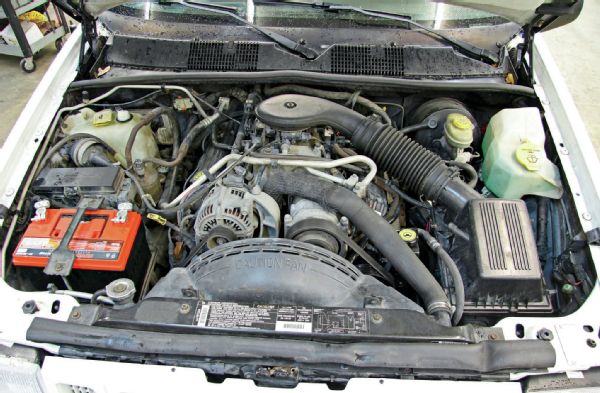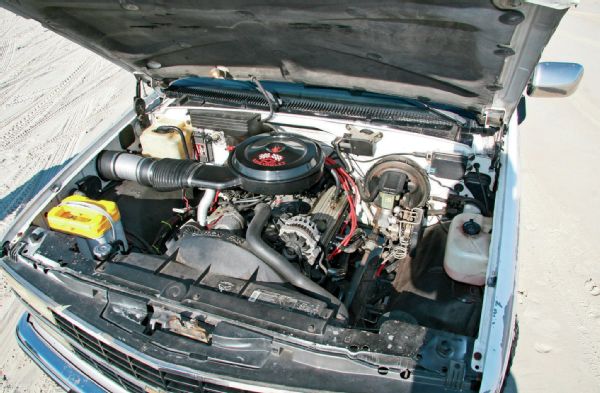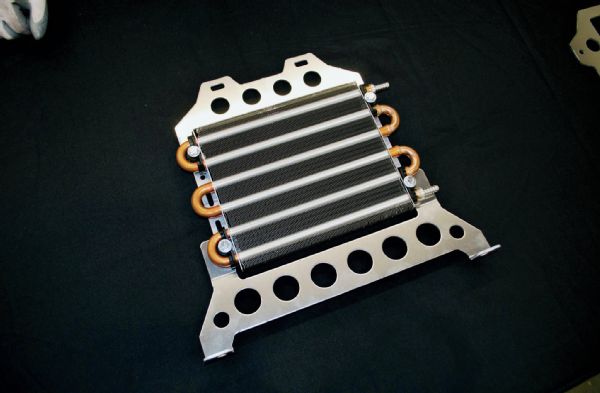
 Ali Mansour
Brand Manager, 4WD & Sport Utility
Ali Mansour
Brand Manager, 4WD & Sport Utility
If you’re like us, you’ve probably spent your fair share of weekends roaming your local junkyard for cheap parts. Maybe one of our favorite things to do is see what engines are ripe for the taking. While swapping a different engine in your rig is never a dirt-cheap affair, getting your parts from your local pick-and-pull can make it a lot easier on the wallet. Most of you know about Hemi conversions and GM’s highly sought-after late-model LS-series engine swaps, but gathered here are some more affordable (and realistic) gasoline engine options we often find in our local junkyards.
Our band of engine options are all fuel-injected, which means you’ll need a little electronic knowhow, but none require you to be a wiring genius. These budget-friendly V-8 options are also well supported by the aftermarket industry. This means wiring harness, transmission adapters, and even bolt-in engine brackets can be sourced without much drama. Having a V-8 under the hood is more obtainable than ever, and with a little elbow grease, you can have your seven-slot ride rumbling in no time.
5.2L/5.9L Magnum
The 5.2L and 5.9L Magnum V-8s are two of the most accessible and easy-to-fit engines. The early ’90s to ’02 multiport fuel-injection versions are the ones to look for. Found in ZJ Grand Cherokees, Dodge Durango’s, Dakota’s, and Ram trucks, there’s no shortage of the push-rod V-8s in wrecking yards. Due to the mass availability, these engines are pretty cheap.

Horsepower figures range from around 220 to 230 hp for the 5.2L and 230 to 245 hp on the 5.9L. Torque numbers are a bit more impressive from both and typically span from 295 to 335 lb-ft. One of the most common issues for both the 5.2L and 5.9L is an intake manifold leak, usually due to a bad gasket or sheetmetal panel. The cast-iron block isn’t the lightest, but the engine is known to tick well into the 200,000 mile range and beyond.
You’ll want to make sure that your donor engine is equipped with a rear oil-sump pan, since some of the 5.2L and 5.9L engines were not. Given both engines use capped fuel rails (non-return fuel system), you will need a pressure regulator. The engine requires around 45 psi of fuel pressure. You can get away with running stock internally regulated in-tank pump on later-model TJ, ZJ, XJ, and YJ applications. For other applications, many have great luck with NAPA PN 3737, which is an easy-to-source external pressure regulator.
You’ll want to peel off the old engine harness and computer from the donor vehicle as they will be critical parts of the puzzle. Companies such as Hot Wire Auto offer wiring harness services, which merge your existing vehicle harness with the donor wiring. The company can even re-flash the computer to display your Jeep’s VIN. This will make passing inspection in applicable states much easier. Don’t forget to grab all of the donor emissions parts! You’re going to need them.
There is a variety of automatic transmission options that came behind both engines. We’ve had great luck with the 46RE, but we wouldn’t say it’s far superior to the other auto options. Manual transmission options are more limited, but you can find a five-speed NV3500 packaged in some Dakotas or an even stronger NV4500 in Ram trucks.
4.8L GM
In the world of late-model GM LS engine swaps, the go-to V-8s are typically the 5.3L, 6.0L, and 6.2L. The aforementioned LS engines are some of our favorites as well, but they don’t last long in the junkyard. One engine that does seem to stay around a bit longer is the late-model 4.8L V-8. Given the 4.8L and 5.3L share much of the same architecture (both have the same block, but different internals), the push-rod 4.8L is a great power source for those in the market.

Found under the hood of ’99 to ’13 GM trucks and SUVs, the 4800 Vortec engine packs just as much potential as the more sought-after 5.3L. Stock horsepower figures range from 270 to 302 hp, while torque numbers stay between 285 and 305 lb-ft. Don’t let these seemingly low power figures deter you. With a little help from the aftermarket, you can easily get these engines in the 400 hp range. We’ve even seen these blocks turn out as much as 1,000 hp!
The ability to go to an older and well-supported automatic transmission such as the TH350, TH400, or 700R4 with this V-8 is easy. In stock form, you’ll likely find these with a 4L60E automatic, which isn’t a bad transmission. It’s a late-model engine, which means you will need all of the wiring, computer, and emissions components. Don’t be too afraid of high mileage (think 200,000 plus), as these engines are known for reliability and going the distance. If you’re on a budget, but want an LS under the hood, the 4.8L is a great option.
TBI 350
When it comes to aftermarket support, the GM 5.7L 350ci V-8 is king. These tried-and-true push-rod V-8s saturate junkyards across the nation. For our money, we’d look for a throttle body injection version, which can typically be found in GM trucks, SUVs, and performance cars ranging from ’87 to ’96. Stock power figures came in around 210 hp and 300 lb-ft of torque.

Cranking out more power will take some time and money, but it’s not uncommon to grab 300 to 400 hp out of well-built naturally aspirated 5.7L. The engines are great for those looking for a simple and reliable powerplant. You’ll need all of the electronic controls for the TBI, which isn’t very much. Howell and Painless are both sound options for wiring as well. Pairing down the stock harness is definitely achievable by a novice wrench as well. The fuel system is low pressure, only requiring 9-14 psi. A plethora of bell housing adapters will allow you a range of transmission options.
5.0L Ford HO
We’re not sure if there are more bad Ford Mustang drivers or really good Camaro drivers, but the Mustang pickings are always way more plentiful than the Bowties at our pick-and-pull. Found in ’86 to ’92 Ford Mustangs, the HO 302ci 5.0L led many to flock to the lightweight pony car. While images of mullets and Vanilla Ice might cloud your Mustang judgment, the durable 5.0Ls are stout powerplants.

Sure, 225 hp and 300 lb-ft of torque might not sound like much these days, but it will get your attention in something as lightweight as a Wrangler. Another bonus for the fox-body cars is that the aftermarket support is tremendous. It’s a pretty compact engine too, which makes packaging much easier in smaller engine bays. Roller camshafts, forged pistons, and high-nickel blocks allowed the 90-degree V-8 engines to gain a great reputation for being durable.
One small hurtle with the 5.0L is that you’ll need to run an external fuel regulator and fuel return line. Fortunately, these engines are designed to run on external fuel pumps with a pressure range of 42-50 psi. Be sure to grab all of the wiring and computer. Companies like Painless Wiring can also fit you with the harness you need. An aftermarket rear sump oil pan and pickup will need to be sourced as well. Summit Racing is a great resource for comparing and gathering parts.